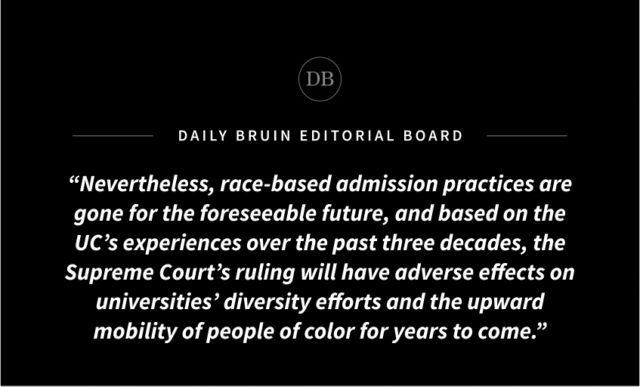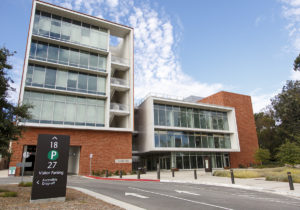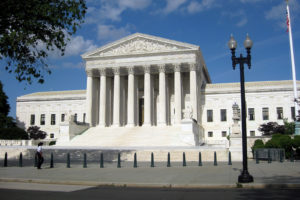This post was updated July 13 at 6:52 p.m.
Editor’s note: Editorials do not represent the Daily Bruin as a whole. The board encourages readers to respond to our editorials at dailybruin.com/submit.
Creating the next generation of leaders requires a diverse student body at the collegiate level.
Race-based college admissions have endeavored to promote this diversity in American universities while rectifying systemic inequities that have disproportionately discouraged Black and brown students from pursuing an education at the nation’s best colleges. While affirmative action has not been a cut-and-dry solution to the disparities that exist in the United States, it has certainly played an important role in chipping away at them.
But recently, affirmative action was overturned in a 6-3 decision by the Supreme Court.
In his majority decision, Chief Justice John Roberts wrote that the Supreme Court allowed race-based college admissions under certain circumstances: affirmative action programs could not consider race negatively, must comply with the judicial principle of “strict scrutiny” and must eventually end.
The Court found that Harvard and the University of North Carolina’s race-based admissions practices “fail each of these criteria.”
In concurring opinions, Justices Neil Gorsuch and Clarence Thomas also defended the Court’s decision on the basis of the landmark Civil Rights Act of 1964, arguing that affirmative action violates Title VI of the Act, which bans discrimination in federally-funded programs.
Situated in the context of the Fourteenth Amendment, the Supreme Court’s decision against Harvard and UNC’s affirmative action programs may not appear problematic. In theory, higher education functioning as meritocracy sounds appealing. But in reality, the ruling is not as anti-discriminatory as its proponents make it seem.
In using the Fourteenth Amendment and the Civil Rights Act to tear down affirmative action, the Supreme Court’s conservative majority has weaponized some of the laws central to the struggle for abolitionism and civil rights to abolish programs built to redress many of the systemic inequities that slavery and segregation brought about.
In 1996, the approval of Proposition 209 by California voters rendered the consideration of sex or race in public spheres – favorably or unfavorably – as discriminatory. The end of affirmative action in California was then reaffirmed in 2020 with the failure of Proposition 16, which sought to repeal the sections that Prop. 209 added to the state constitution.
California, then, can be considered one of the best predictors of what will occur in higher education on a national level.
The ruling has a few key ramifications for Black and brown communities: fewer applications to elite institutions, fewer STEM degrees, lower college graduation rates and a less competitive presence in the labor market.
These are not educated guesses. Rather, they are the studied, long-term effects of Proposition 209 on the UC system.
A study conducted by Zachary Bleemer, an assistant professor of economics at Princeton, looked into the effects of Proposition 209 on the outcomes of underrepresented minorities, or URMs, and the resulting struggle to maintain diverse student bodies in the most prestigious UCs, among other results.
The study found that in the years following the passage of Proposition 209, the enrollment of URMs at UCLA and UC Berkeley decreased sharply – a change that subsequently led to URMs becoming less likely to earn STEM degrees or any graduate degrees.
Achieving financial success is a key aspect of upward social mobility, and it’s clear that the ban on affirmative action in California had unfavorable effects on URMs’ ability to do so. Beyond the clear deficits that Black and Latino students experience as a result of Proposition 209, the study examined outcomes for non-URMs: namely, Asian and white students.
The study found that despite Proposition 209 increasing non-URM students’ enrollment at selective universities, such populations saw minor long-term educational and financial effects.
Such a finding is significant because it highlights a glaring downside to the Court ruling: under the guise of striving for a post-racial society, the change in college admissions means observably worse outcomes for Black and brown people while white and Asian people experience marginal noticeable benefits.
Moreover, the Editorial Board would be remiss to ignore the effect that the ban on affirmative action in California has had on diversity efforts at UCLA.
At UCLA, the admission of Black and Latino students dropped by nearly half in the immediate aftermath of Proposition 209. It was only in 2021 that the percentage of Black students in UCLA’s first-year class finally exceeded the 7.3% recorded in 1995, the year when the UC Board of Regents moved to ban affirmative action.
Black enrollment reached a low point in 2006 when only 96 Black students were admitted as part of UCLA’s 4,800-person first-year class.
Even today, UCLA has struggled with its goal of reaching the requirement of 25% Latino enrollment to be considered a Hispanic-Serving Institution by 2025. This is despite its location in a state where Latino people compose a plurality of the population and represent half of the population of LA County.
The years since the passage of Proposition 209 has given UCLA time to devise race-neutral strategies to enhance diversity, such as bolstering minority-outreach programs. UCLA pours roughly $2 million annually into efforts to recruit students from diverse backgrounds.
Even still, it has taken the school more than 25 years to admit a student body representative of California’s Black population. For the educational institutions across the country that must pivot to an entirely new framework of college admissions, the negative impact on prospective Black and brown students will be pronounced and immediate.
If, however, elite colleges are genuinely committed to the principles of diversity and inclusion, they can start with one of the steps the UC system took in the aftermath of Proposition 209: the elimination of legacy admissions programs that overwhelmingly favor wealthy and white applicants.
Nevertheless, race-based admission practices are gone for the foreseeable future, and based on the UC’s experiences over the past three decades, the Supreme Court’s ruling will have adverse effects on universities’ diversity efforts and the upward mobility of people of color for years to come.




Comments are closed.